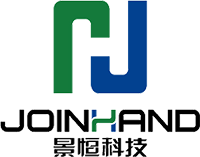Common issues and solutions for U-shaped steel cable trays
Shenjia Hydraulic
Release time:
2024-12-04
The U-shaped steel cable tray, as a common cable support, may encounter some common issues during use. This article will introduce these problems and their solutions.
The U-shaped steel cable tray is a commonly used cable support that can be seen in various buildings and industrial sites. However, in daily use, some common issues may affect its performance and effectiveness.
1. Cable displacement issue: During use, cables may sometimes shift, causing the cable tray to lose its support function. The solution is to regularly check the fixing condition of the cable tray, make timely adjustments, and ensure the cables are set correctly.
2. Overweight issue: If the weight of the cables carried by the U-shaped steel cable tray exceeds its load capacity, it may lead to the collapse of the tray. The solution is to choose appropriate specifications and quantities based on the load capacity of the tray to ensure it is within the load range.
3. Corrosion issue on steel surface: Due to environmental and climatic factors, the surface of the U-shaped steel cable tray may experience corrosion. The solution is to regularly clean the surface of the tray and apply anti-corrosion paint to extend its service life.
4. Installation instability issue: Unstable installation can cause the cable tray to shake or loosen, creating safety hazards. The solution is to use professional tools and appropriate installation methods to ensure that the cable tray is securely installed on the support.
In summary, regular inspection and maintenance, reasonable planning for installation, and attention to environmental factors are key to ensuring the normal use of U-shaped steel cable trays. If problems arise, seek professional help promptly to avoid unnecessary losses.
1. Cable displacement issue: During use, cables may sometimes shift, causing the cable tray to lose its support function. The solution is to regularly check the fixing condition of the cable tray, make timely adjustments, and ensure the cables are set correctly.
2. Overweight issue: If the weight of the cables carried by the U-shaped steel cable tray exceeds its load capacity, it may lead to the collapse of the tray. The solution is to choose appropriate specifications and quantities based on the load capacity of the tray to ensure it is within the load range.
3. Corrosion issue on steel surface: Due to environmental and climatic factors, the surface of the U-shaped steel cable tray may experience corrosion. The solution is to regularly clean the surface of the tray and apply anti-corrosion paint to extend its service life.
4. Installation instability issue: Unstable installation can cause the cable tray to shake or loosen, creating safety hazards. The solution is to use professional tools and appropriate installation methods to ensure that the cable tray is securely installed on the support.
In summary, regular inspection and maintenance, reasonable planning for installation, and attention to environmental factors are key to ensuring the normal use of U-shaped steel cable trays. If problems arise, seek professional help promptly to avoid unnecessary losses.
Related News


